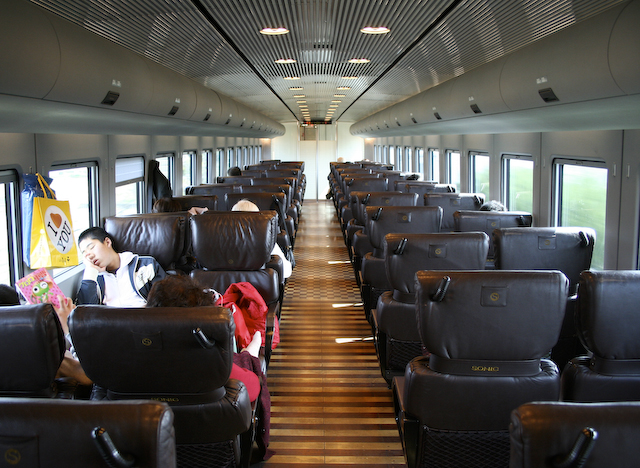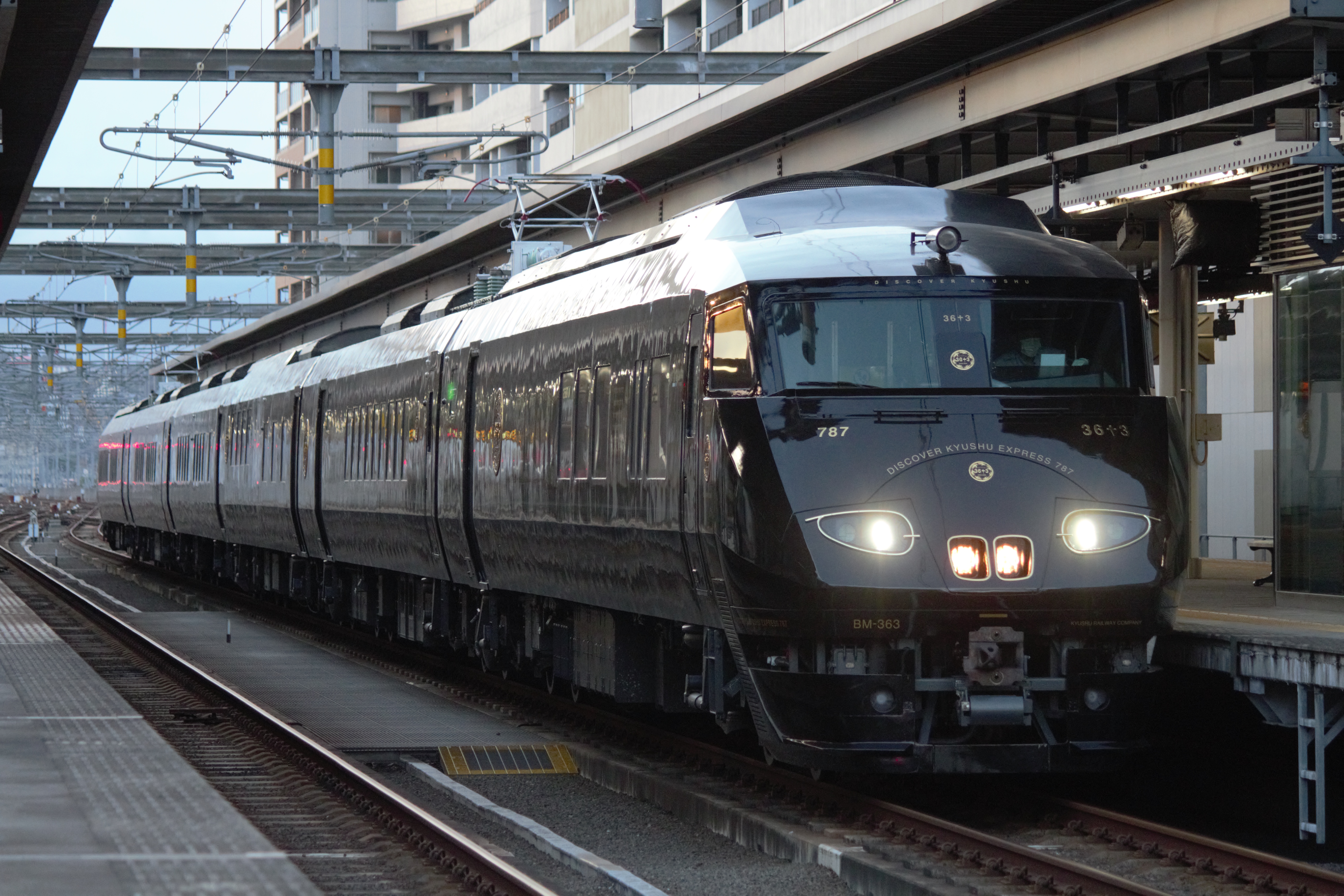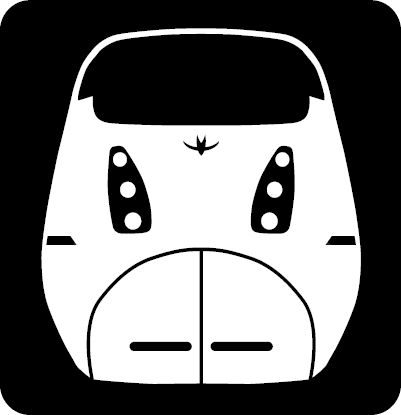|
Relay Kamome
is a limited express train operated by JR Kyushu in Japan. It operates between Hakata and Nagasaki on the Kagoshima Main Line and the Nagasaki Main Line. ''Kamome'' means seagull in Japanese. As of 23 September 2022, the name was inherited by the new Shinkansen service to Nagasaki, at which point the remaining limited express services between Takeo-Onsen and Hakata were renamed ''Relay Kamome''. History The ''Kamome'' name (written as "鷗") was first used from 1 July 1937 on limited express trains operating between Tokyo and Kobe. This service continued until February 1943. The name (written as "かもめ") was subsequently revived from 15 March 1953 for use on limited express services operating between Kyoto and Hakata. This service was discontinued in March 1975 with the completion of the Sanyō Shinkansen to Hakata. On 1 July 1976, with the electrification of the Nagasaki Main Line, services resumed (initially between Kokura and Nagasaki, later between Hakata and Nagas ... [...More Info...] [...Related Items...] OR: [Wikipedia] [Google] [Baidu] |
787 Series
The is an AC electric multiple unit type operated on limited express services by Kyushu Railway Company (JR Kyushu) in Japan since July 1992. Design The trains were built jointly by Hitachi and Kinki Sharyo. Formations 7-car sets (BM1–11, BM13–14) (2004-2011) The 7-car sets are formed as follows. Cars 2 and 7 are each fitted with one PS400K scissors-type pantograph. 6-car sets (BM1-14, BM115) The two 6-car sets are formed as follows. Cars 2 and 6 are each fitted with one PS400K scissors-type pantograph. 4-car sets (BM101–BM111) The 11 4-car sets are formed as follows. Car 3 is fitted with one PS400K scissors-type pantograph. Operations As of March 2011, the 787 series are used on the following limited express services. * ''Ariake'' * '' Kirameki'' * '' Kaiō'' * ''Kamome'' * ''Midori'' * ''Nichirin'' * '' Hyuga'' * '' Kirishima'' * '' Sendai Express'' Former operations * ''Relay Tsubame'' (2004–2011) From the start of the revised timetable on 12 March 2011 ... [...More Info...] [...Related Items...] OR: [Wikipedia] [Google] [Baidu] |
Nishi Kyushu Shinkansen
The is a Japanese Shinkansen high-speed rail line on the northwest part of Kyushu Island that is operated by the Kyushu Railway Company (JR Kyushu). A segment of the line that connects Nagasaki to commenced service on 23 September 2022. The line runs parallel to the existing Nagasaki Main Line and has a total length of , making it the shortest high-speed Shinkansen railway line in Japan in terms of length. The entire line is envisioned to connect to , and potentially become an extension of the San'yō Shinkansen in Honshu. However, as of 2022 the route of the segment east of Takeo-Onsen to Hakata via Saga has yet to be decided, and construction has yet to commence. It remains unclear when the entire line will be completed. For the foreseeable future, the Relay Kamome service provides a connection to Hakata. Services Services are operated by 6-car N700S series trains, at a maximum speed of . Initially, there is only one service type, named ''Kamome''. All ''Kamome'' servi ... [...More Info...] [...Related Items...] OR: [Wikipedia] [Google] [Baidu] |
Kamome
is a limited express train operated by JR Kyushu in Japan. It operates between Hakata and Nagasaki on the Kagoshima Main Line and the Nagasaki Main Line. ''Kamome'' means seagull in Japanese. As of 23 September 2022, the name was inherited by the new Shinkansen service to Nagasaki, at which point the remaining limited express services between Takeo-Onsen and Hakata were renamed ''Relay Kamome''. History The ''Kamome'' name (written as "鷗") was first used from 1 July 1937 on limited express trains operating between Tokyo and Kobe. This service continued until February 1943. The name (written as "かもめ") was subsequently revived from 15 March 1953 for use on limited express services operating between Kyoto and Hakata. This service was discontinued in March 1975 with the completion of the Sanyō Shinkansen to Hakata. On 1 July 1976, with the electrification of the Nagasaki Main Line, services resumed (initially between Kokura and Nagasaki, later between Hakata and Nagas ... [...More Info...] [...Related Items...] OR: [Wikipedia] [Google] [Baidu] |
Yoshinogari-Kōen Station
is a railway station in Yoshinogari, Saga, Yoshinogari, Kanzaki District, Saga, Kanzaki District, Saga Prefecture, Japan. It is operated by JR Kyushu and is on the Nagasaki Main Line. Lines The station is served by the Nagasaki Main Line and is located 13.1 km from the starting point of the line at . Station layout The station consists of a side and an island platform serving three tracks with two sidings branching off track 1. The station building is a modern design of concrete and is a hashigami structure where the passenger facilities such as a waiting area, ticket window and automatic ticket vending machines are located on a bridge which spans the tracks. The bridge also allows the station to have two entrances, one from each side of the tracks. Elevators provide access to the bridge from both entrances and, from the bridge, to the platforms. Management of the station has been outsourced to the JR Kyushu Tetsudou Eigyou Co., a wholly owned subsidiary of JR Kyushu spec ... [...More Info...] [...Related Items...] OR: [Wikipedia] [Google] [Baidu] |
783 Series
__NOTOC__ Year 783 ( DCCLXXXIII) was a common year starting on Wednesday of the Julian calendar. The denomination 783 for this year has been used since the early medieval period, when the Anno Domini calendar era became the prevalent method in Europe for naming years. Events By place Byzantine Empire * A Byzantine expeditionary force under Staurakios, chief minister (''logothete''), begins a campaign against the communities (''Sclaviniae'') of Greece. Setting out from Constantinople, the imperial army follows the Thracian coast into Macedonia, and then south into Thessaly, Central Greece and the Peloponnese. Staurakios restores a measure of Byzantine authority over these areas, and collects booty and tribute from the locals. Europe * Mauregatus of Asturias, illegitimate son of the late king Alfonso I, usurps the throne after the death of his brother-in-law Silo. However, the nobility has elected Alfonso II at Adosinda's (wife of Silo) insistence, but Mauregatus ass ... [...More Info...] [...Related Items...] OR: [Wikipedia] [Google] [Baidu] |
485 Series
The (and the earlier 481 and 483 series variants) is a Japanese limited express electric multiple unit (EMU) type introduced in 1964 by Japanese National Railways (JNR), and subsequently operated by the East Japan Railway Company (JR East), West Japan Railway Company (JR-West), and Kyushu Railway Company (JR Kyushu). Approximately 1,500 vehicles were built, although by April 2016, JR East is the only operator still using this type. Variants * 481 series: Dual-voltage (1,500 V DC / 20 kV AC (60 Hz), introduced 1964 * 483 series: Dual-voltage (1,500 V DC / 20 kV AC (50 Hz), introduced 1965 * 485 series: Dual-voltage (1,500 V DC / 20 kV AC (50 Hz/60 Hz), introduced 1968 481 series The 481 series trains were introduced in 1964 for use on Hokuriku Line limited services, and were capable of operating under 1,500 V DC or 20 kV AC (60 Hz) overhead wire power supplies. These train were subsequently operated by JR-West and JR Kyushu. File:JNR-KURO481-1.jpg, ... [...More Info...] [...Related Items...] OR: [Wikipedia] [Google] [Baidu] |
Isahaya Station
is a railway station in Eishō-chō, Isahaya, Nagasaki, Japan. It is owned by Kyushu Railway Company (JR Kyushu), and is the junction between three lines: the Nagasaki Main Line, Ōmura Line and the private Shimabara Railway Line. Lines The station is served by the Nagasaki Main Line and is located 100.4 km from the starting point of the line at . It is also the eastern terminus of the Ōmura Line, 36.2 km from the starting point at and the western terminus and starting point for the private Shimabara Railway Line. Besides the local services on the line, the JR Kyushu rapid ''Seaside Liner'' service between and stops at the station. This station is also served by the Nishi Kyushu Shinkansen. Station layout The station consists of three side platform and two island platforms serving seven tracks. Track/platform 0 is a dead-end siding which juts into the platform 1 (the side platform) and is used exclusively by the trains of the Shimabara Railway Line. Platform 2 is ... [...More Info...] [...Related Items...] OR: [Wikipedia] [Google] [Baidu] |
Ureshino-Onsen Station
is a railway station built in Ureshino, Saga, Japan, by the Kyushu Railway Company (JR Kyushu). Lines Ureshino-Onsen Station is served by the Nishi Kyushu Shinkansen. Platforms The station consists of 2 side platforms with two tracks total. History Shin-Ōmura Station opened on 23 September 2022 when the Nishi Kyushu Shinkansen The is a Japanese Shinkansen high-speed rail line on the northwest part of Kyushu Island that is operated by the Kyushu Railway Company (JR Kyushu). A segment of the line that connects Nagasaki to commenced service on 23 September 2022. The ... began revenue service. References External linksSaga prefecture explanation meeting data Railway stations in Saga Prefecture Railway stations in Japan opened in 2022 {{Saga-railstation-stub ... [...More Info...] [...Related Items...] OR: [Wikipedia] [Google] [Baidu] |
Cross-platform Interchange
A cross-platform interchange is a type of interchange between different lines at a metro (or other railway) station. The term originates with the London Underground; such layouts exist in other networks but are not commonly so named. In the United States, it is often referred to as a cross-platform transfer. This configuration occurs at a station with island platforms, with a single platform in between the tracks allocated to two directions of travel, or two side platforms between the tracks, connected by level corridors. The benefit of this design is that passengers do not need to use stairs to another platform level for transfer. A cross-platform interchange arrangement may be costly to build due to the complexity of rail alignment, especially if the railway designers also arrange the track with flyovers (which is typically done to increase efficiency). A typical bidirectional cross-platform interchange configuration consists of two outbound directions of two different lines ... [...More Info...] [...Related Items...] OR: [Wikipedia] [Google] [Baidu] |
Shinkansen
The , colloquially known in English as the bullet train, is a network of high-speed railway lines in Japan. Initially, it was built to connect distant Japanese regions with Tokyo, the capital, to aid economic growth and development. Beyond long-distance travel, some sections around the largest metropolitan areas are used as a commuter rail network. It is operated by five Japan Railways Group companies. Over the Shinkansen's 50-plus-year history, carrying over 10 billion passengers, there has been not a single passenger fatality or injury on board due to derailments or collisions. Starting with the Tokaido Shinkansen () in 1964, the network has expanded to currently consist of of lines with maximum speeds of , of Mini-Shinkansen lines with a maximum speed of , and of spur lines with Shinkansen services. The network presently links most major cities on the islands of Honshu and Kyushu, and Hakodate on northern island of Hokkaido, with an extension to Sapporo under constru ... [...More Info...] [...Related Items...] OR: [Wikipedia] [Google] [Baidu] |







